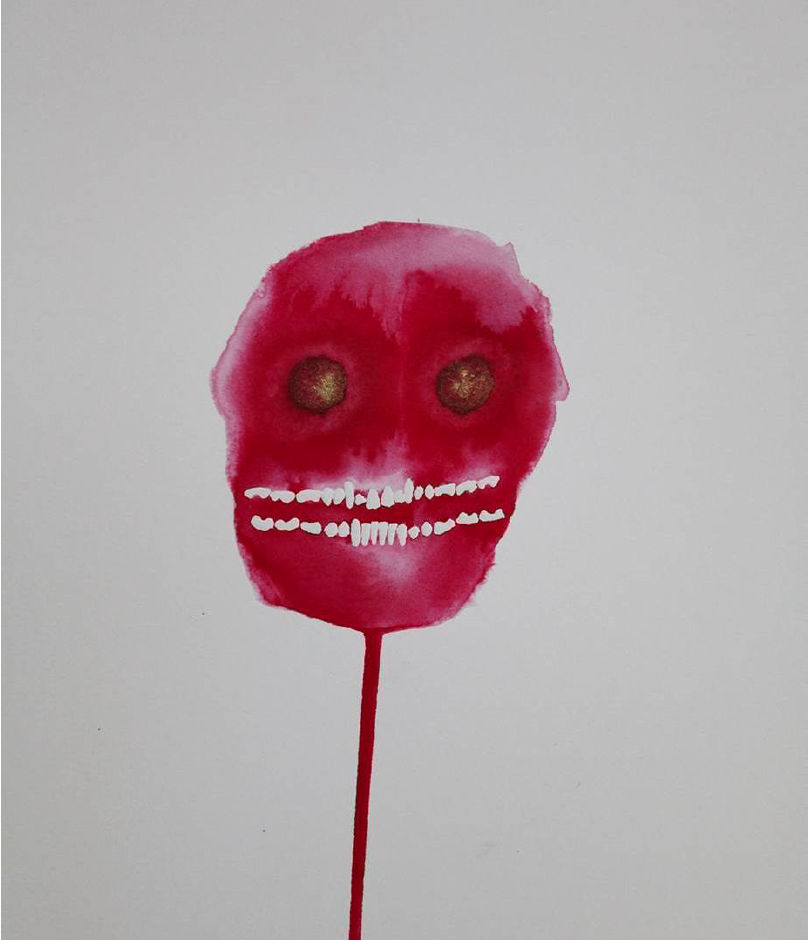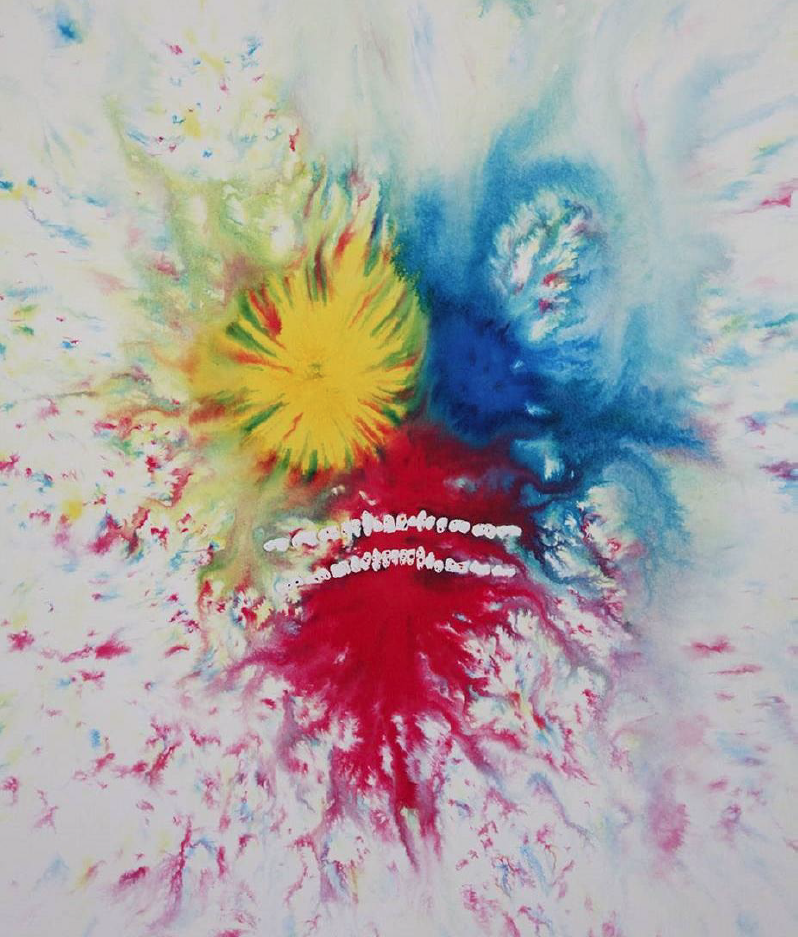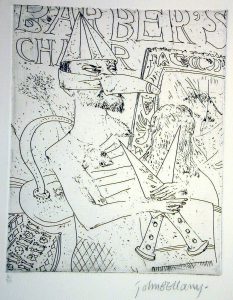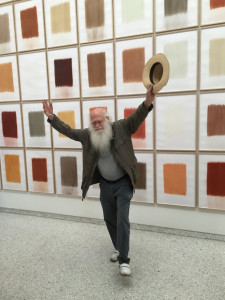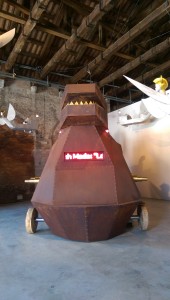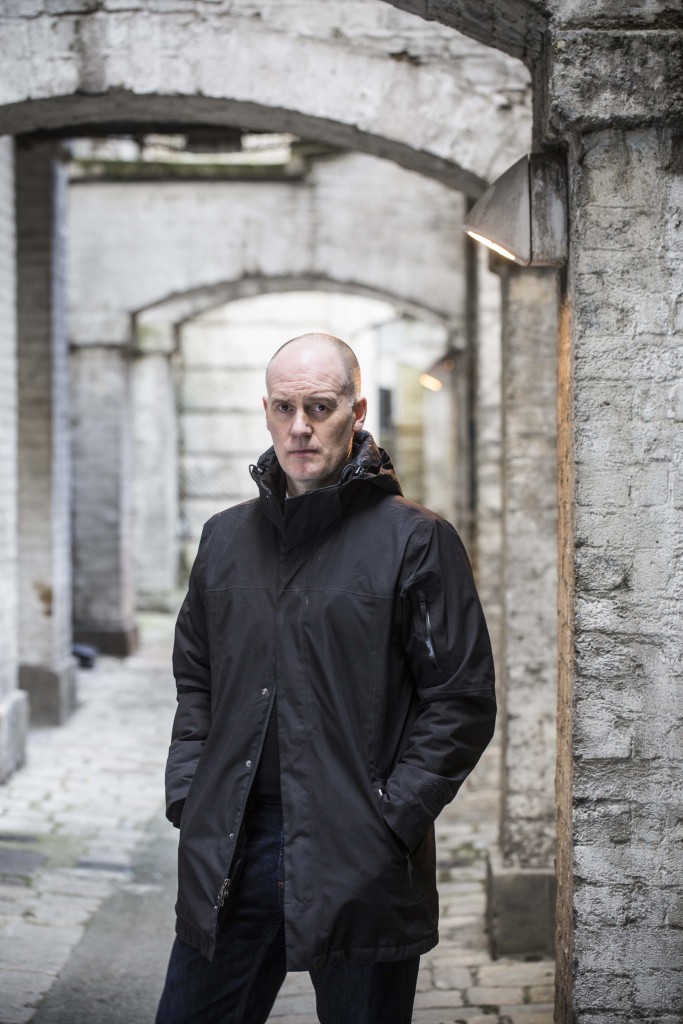
Graham Fagen London By David Levene
Graham Fagen has been described as one of the most influential artists working in Scotland today, his work is varied and combines video, performance, photography and sculpture. Themes he explores include, flowers, journeys and popular song in attempt to understand the powerful forces that shape our lives.
For the 56th Venice Biennale Graham has created much new work, filling the four rooms at the Palazzo Fontana. An impressive bronze sculpture of a tree, titled Rope Tree, confronts you in the first of these rooms. Its power comes collectively from the use of material, its imposing size fused with the associations these materials have with the city of Venice. Subsequent rooms reveal convivial paintings of the artists teeth, titled ‘Scheme for lament’. These are studies of the inside and outside surface of the artist teeth as felt by his tongue.The final room houses an impressive five channel audio-visual installation displayed across a quartette of TV monitors. This piece is a collaboration with composer Sally Beamish, the Scottish ensemble, musician Ghetto Priest and producer Adrian Sherwood. Inspired by the work of Scottish poet Robert Burns each performers action and sound are isolated by their own screen and speaker but played in unison. This really made me aware of music composition and how important the different elements are. It really compounded for me the way Graham Fagen’s work “ scrutinizes the ways in which we are hybridized and formed through culture and experience”

Rope Tree . photograph by Alan Richards
I managed to catch up with Graham before his show he kindly answered a few questions for FAD
1.Where were you born and raised and where do you call home?
I was born in the Rottenrow, Glasgow. I was raised in Irvine, Ayrshire and I call Scotland my home
2.What inspired you to become an artist?
Erwin Panofsky’s book Gothic Architecture and Scholasticism.
3.How do you start the process of making artwork?
By addressing a hunch
4.Can you tell us more about your work and the main ideas behind this piece for the Biennale?
I’m interested in cultural formers and how cultures communicate ideas and understanding. One of the works I’ll be making for Venice is a 5 channel audio / video version of The Slave’s Lament, first published by Robert Burns in 1792. To make this work I have collaborated with the composer Sally Beamish and musicians from Scottish Ensemble, as well as dub producer Adrian Sherwood and vocalist Ghetto Priest.
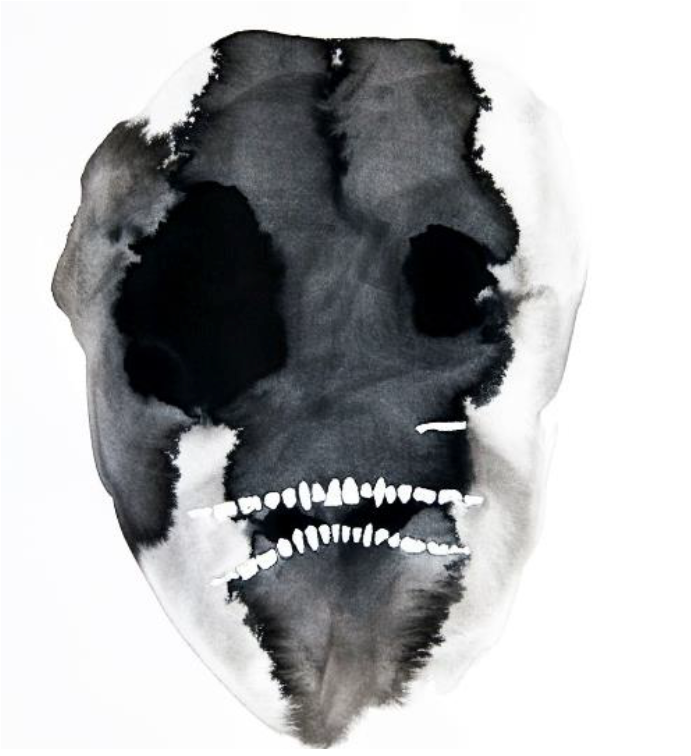
G Fagen Consciuosness(B&W)indian ink and enamel
5.What is the biggest challenge you have faced in your career to date?
Keeping it going.
6.And what specific challenges have there been in this work?
Time has been the biggest challenge.
7.What defines something as a work of art for you?
Something that intrigues me and makes me think or ask questions.
8.What event in your life big or small prompted a major turning point in your career?
Understanding Panofsky’s Gothic Architecture and Scholasticism.
9.What is the one big question you would like answered?
Why the hypocrisy?
10.What is the best piece of advice you have been given?
Say yes to everything.
11.What would you be lost without?
My family.
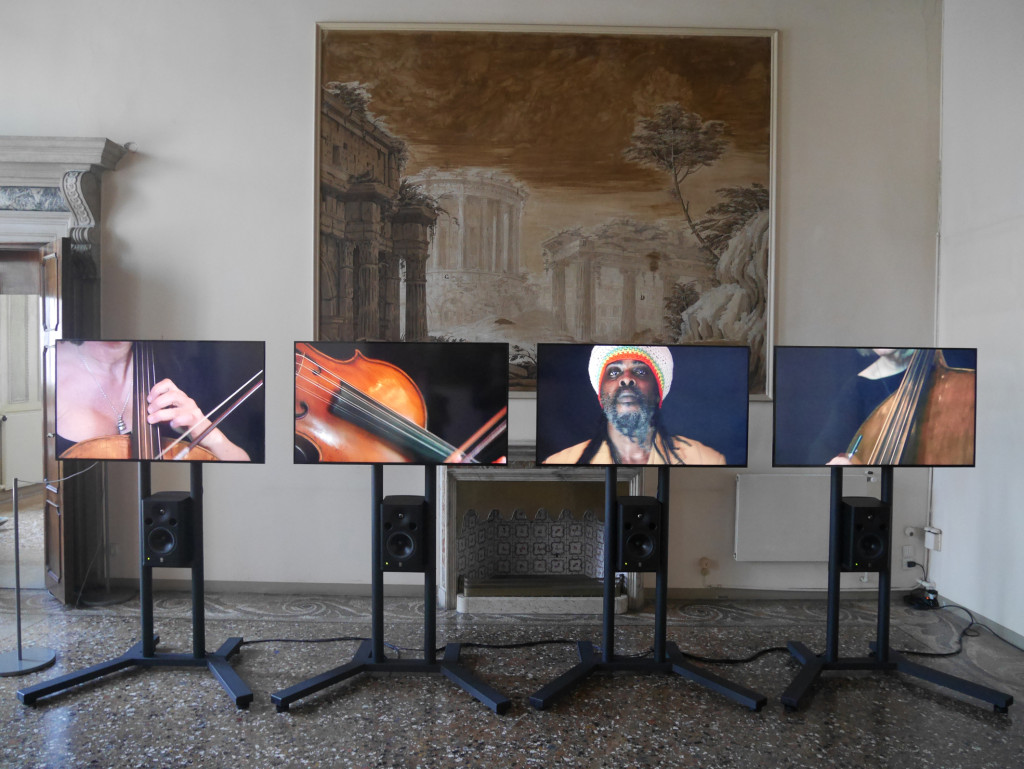
The Slaves Lament, photograph by Alan Richards
Exhibition runs 9th May until the 22nd November
Tuesday – Sunday 10.00 – 18.00 Admission free
Palazzo Fontana Cannaregio 3829 Venezia Access via Strada Nuova Vaporetto ; Ca’D’Oro
